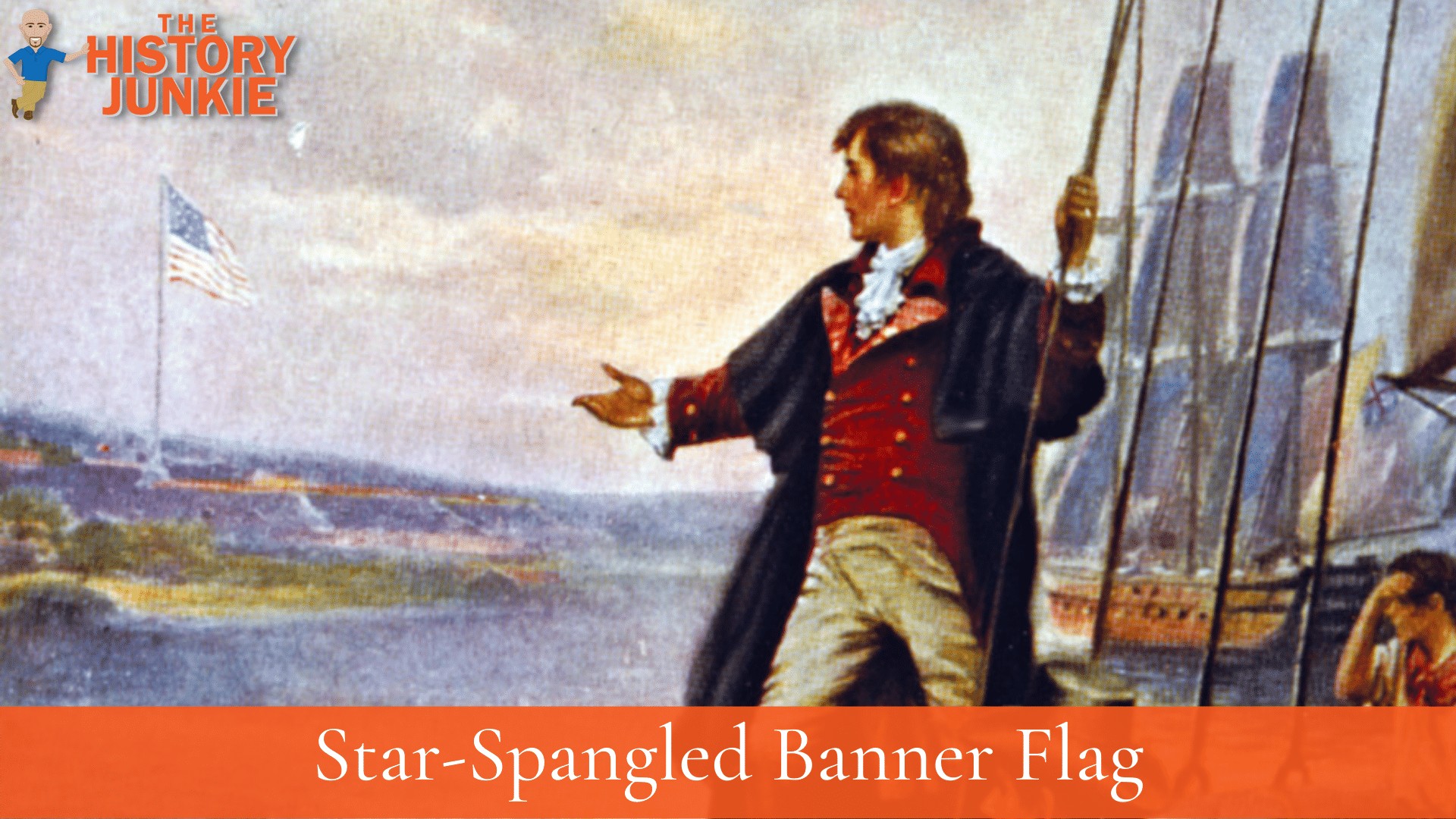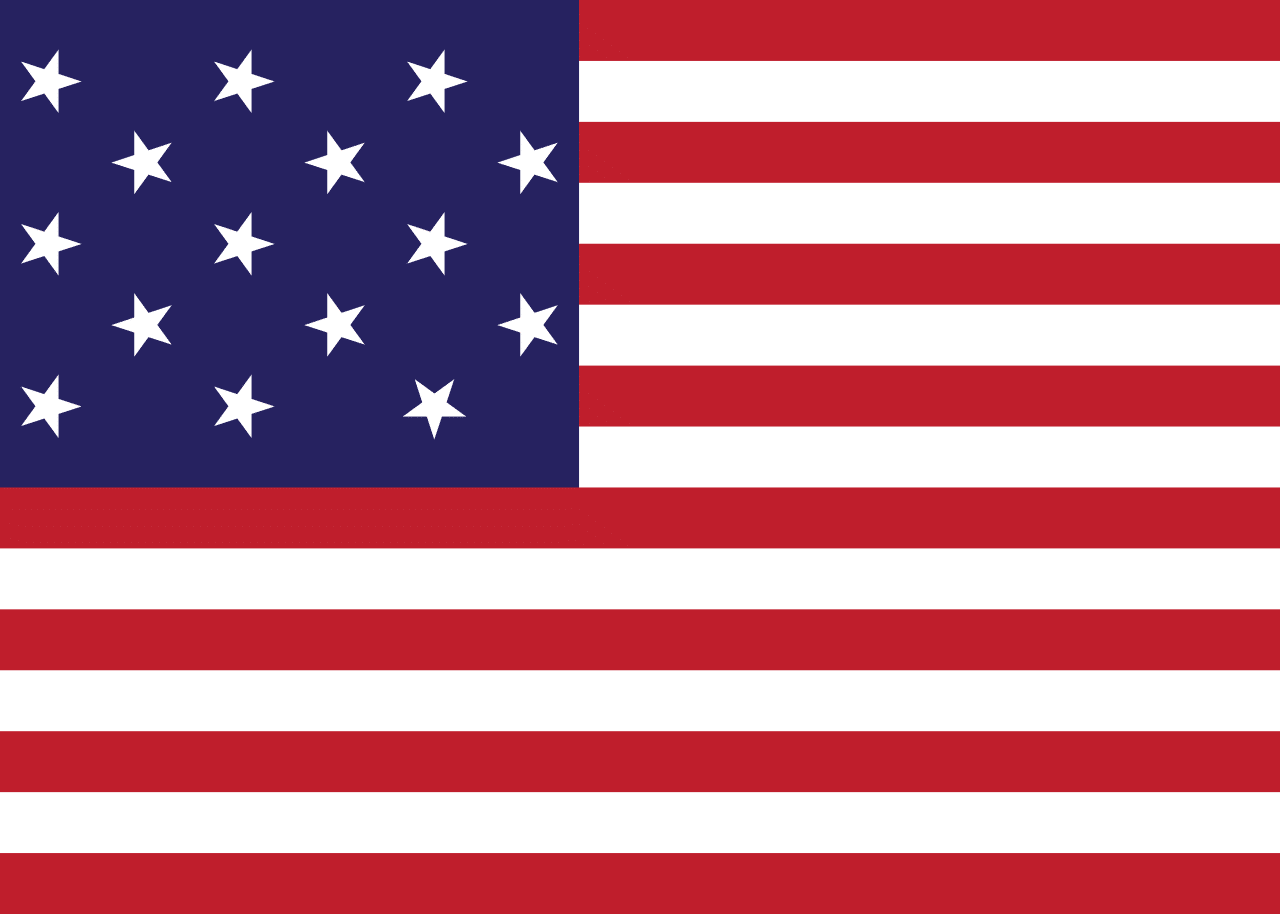The Star-Spangled Banner flag has 15 stripes and 15 stars, and it was this flag that inspired Francis Scott Key to write the beautiful Star-Spangled Banner lyrics.

The two additional stars and stripes represent the entrance of Vermont and Kentucky into the Union.
Key was a witness to the 25-hour British attack on Fort McHenry during the War of 1812. When he finally saw the Star-spangled Banner flag flying at dawn, Key was inspired to write the words to the Star-Spangled Banner on the back of a letter.
A Congressional resolution that was signed on March 3rd, 1931, declared that the Star-Spangled Banner song would be the official national anthem of the United States of America.
The fifteen stars on the Star-Spangled Banner flag were arranged in vertical rows. Each row contains three stars.
When the Star-Spangled Banner flag was introduced, it was still the practice to add both a stripe and a star with the induction of a new state.

History
In Baltimore's preparation for an expected attack on the city, Fort McHenry was made ready to defend the city's harbor.
When Major George Armistead, the fort's commander, expressed the desire for a very large flag to fly over the fort, General John S. Stricker and Commodore Joshua Barney placed an order for two oversized American flags.
The larger of the two flags would be the Great Garrison Flag, the largest battle flag has ever flown at the time.
The smaller of the two flags would be the Storm Flag, to be more durable and less prone to fouling in inclement weather.
The flag was sewn by prominent Baltimorean flagmaker Mary Young Pickersgill under a government commission in 1813 at a cost of $405.90 (equivalent to $5,699 in 2021).
Armistead specified "a flag so large that the British would have no difficulty seeing it from a distance"
The Battle
The Flag was flown over the fort when 5,000 British soldiers and a fleet of 19 ships attacked Baltimore on September 12, 1814.
The bombardment turned to Fort McHenry on the evening of September 13, and continuous shelling occurred for 25 hours under heavy rain.
When the British ships were unable to pass the fort and penetrate the harbor, the attack was ended, and on the morning of September 14, when the battered flag still flew above the ramparts, it was clear that Fort McHenry remained in American hands.
This revelation was famously captured in poetry by Francis Scott Key, an American lawyer and amateur poet.
Being held by the British on a truce ship in the Patapsco River, Key observed the battle from afar. When he saw the Garrison Flag still flying at the dawn of the morning of the 14th, he composed a poem he originally titled "Defence of Fort McHenry."
The poem would be put to the music of a common tune, retitled "The Star-Spangled Banner," and a portion of it would later be adopted as the United States National Anthem.
Armistead Family
After the battle, the flag came into the possession of Major Armistead. How and when this occurred is unclear. Upon his death in 1818, the flag passed to his widow, Louisa Hughes Armistead, and then to their daughter, Georgiana Armistead Appleton, in 1861.
In 1873, Appleton lent the flag to George Henry Preble, a naval officer who had written a popular history of the American flag.
Preble had the flag quilted to a canvas sail and unfurled it at the Boston Navy Yard to take the first known photograph of it.
He then put the flag on display at the headquarters of the New England Historic Genealogical Society for several weeks.
It was then kept in the Society's vault until 1876, when it was taken to the vault of the Historical Society of Pennsylvania. It was intended to be exhibited at the Philadelphia Centennial Exhibition but was not displayed because of fears it would be damaged.
In 1877, the flag was exhibited at the Old South Church in Boston for the nation's first Flag Day celebration.
Georgiana Appleton died in 1878 and left the flag to her son, Eben Appleton.
The Armistead family occasionally gave away pieces of the flag as souvenirs and gifts
